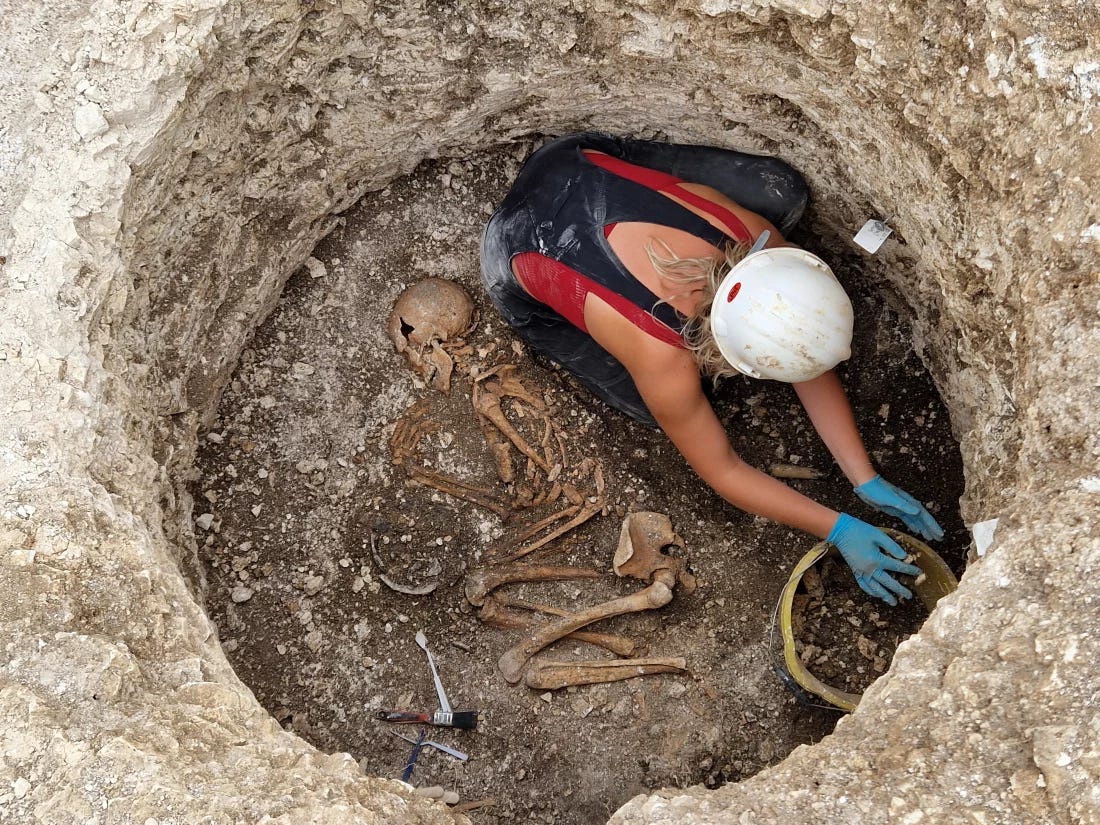Tracing Ancient Roots: How Iron Age Britain Centered on Women
Manage episode 461442073 series 3444207
In a quiet corner of Dorset, a burial site has rewritten what we know about Iron Age Britain. By sequencing DNA from 50 individuals interred over centuries, researchers discovered1 a striking social structure: women, not men, were at the heart of these communities.

A study led by Dr. Lara Cassidy of Trinity College Dublin and published in Nature has confirmed that land and identity were passed down through maternal lines. This “matrilocal” system paints a vivid picture of a society where women likely wielded significant power, both politically and socially.
“This was the cemetery of a large kin group,” Cassidy explains. “We reconstructed a family tree with many branches and found most members traced their maternal lineage back to a single woman, who would have lived centuries before. Relationships through the father’s line were almost absent.”
The Durotriges: Guardians of Maternal Lineage
The burial site in question lies near Winterborne Kingston in Dorset, nicknamed “Duropolis.” It belonged to the Durotriges, a group that lived in southern England before and after the Roman conquest in AD 43. For more than a decade, archaeologists from Bournemouth University have been excavating this rich site, revealing unique insights into Iron Age life.
Dr. Miles Russell, director of the excavation, notes:
“The Romans wrote extensively about Britain, but their accounts often painted the people as untamed and exotic. What we’ve found, however, suggests a sophisticated society where maternal ancestry shaped group identity.”
Indeed, female burials often contained more elaborate grave goods, reinforcing their social prominence. This aligns with Roman accounts of women in Britain, including powerful figures like Boudica and Cartimandua, both of whom led armies against Roman forces.
Evidence Across Britain
The matrilocal system wasn’t isolated to Dorset. By comparing data from other Iron Age cemeteries across Britain, the researchers identified similar patterns of maternal inheritance in Yorkshire and beyond.
Dan Bradley, a co-author of the study, emphasizes the scale of this phenomenon:
“Across Britain, we saw cemeteries where most individuals were maternally descended from a small set of female ancestors. This suggests matrilocality had deep roots on the island.”
In Yorkshire, one dominant maternal lineage emerged as early as 400 BCE. This evidence reveals that women played a crucial role in maintaining family and community identity across the British Isles.
Migration and the Arrival of Celtic Languages
The study also sheds light on migration during the Iron Age. Genetic data revealed waves of migration into southern England from mainland Europe, particularly during the later Bronze and Iron Ages. These findings could reignite debates about when and how Celtic languages arrived in Britain.
“Migration into Britain during the later Bronze Age has previously been detected,” Cassidy explains.
“Our results, however, point to substantial cross-channel mobility during the Iron Age as well. It’s possible that Celtic languages were introduced to Britain on more than one occasion.”
Understanding an Ancient Society
The burial site offers more than just genetic data—it provides a lens into the personal lives of the Durotriges. Anthropologist Dr. Martin Smith describes how these findings add depth to archaeological interpretations:
“Rather than simply seeing a set of skeletons, hidden aspects of these people’s lives and identities come into view as mothers, husbands, and daughters.”
The avoidance of close inbreeding and the occurrence of marriages between distant family branches suggest that the Durotriges had a deep awareness of their ancestry. These practices highlight the intricate social and kinship structures that governed their communities.
Rewriting Women’s Roles in Prehistory
The study challenges long-standing assumptions about gender roles in ancient Europe. While male-centered narratives have often dominated discussions of prehistoric societies, this research places women at the heart of Iron Age Britain.
As Alison Sheridan from National Museums Scotland notes:
“This is a remarkable example of how archaeology and genetics together can illuminate the lives of ancient people. It shows us a society where women were central to social and political life.”
The discovery underscores the complexity of prehistoric Britain, offering new insights into how communities adapted to changing times while maintaining deep connections to their ancestral past.
Related Research
Kristiansen, K., & Larsson, T. B. (2005). The Rise of Bronze Age Society: Travels, Transmissions and Transformations. Cambridge University Press.
DOI: 10.1017/CBO9780511521218Olalde, I., et al. (2018). "The Beaker phenomenon and the genomic transformation of northwest Europe." Nature, 555(7695), 190–196.
DOI: 10.1038/nature25738Frei, K. M., et al. (2015). "Tracing the dynamic life story of a Bronze Age female." Nature Scientific Reports, 5, 10431.
DOI: 10.1038/srep10431
Cassidy, L. M., Russell, M., Smith, M., Delbarre, G., Cheetham, P., Manley, H., Mattiangeli, V., Breslin, E. M., Jackson, I., McCann, M., Little, H., O’Connor, C. G., Heaslip, B., Lawson, D., Endicott, P., & Bradley, D. G. (2025). Continental influx and pervasive matrilocality in Iron Age Britain. Nature. https://doi.org/10.1038/s41586-024-08409-6
11 епізодів




